Welcome to the 2024 edition of the ultimate guide to content research. In a world overflowing with information, standing out requires more than just surface-level engagement. It demands deep, insightful research to produce content that resonates with your audience.
Just as architects and chefs meticulously plan before creating, content creators must dive deep into research to craft narratives that offer relevance and value. This guide will serve as your compass in navigating the vast landscape of content research, helping turn raw data into meaningful stories that captivate and engage.
Picture an architect before designing a skyscraper, or a chef before creating a complex dish. What do they do first? They research. Dive deep. No, not into mounds of soil or piles of ingredients; but into the core substance that will shape their output. It’s about preparation, blueprinting, understanding context, and above all, relevance.
Mastering Content Relevance: The Key to Engaging Your Audience
- Grasp the significance of content relevance
- Discover its role in boosting SEO
- Learn ways to implement content relevance in your strategy
Understanding the Concept of Content Relevance
Relevance is not only about matching keywords or being in the same industry. It’s about creating content that resonates with your reader on a deeper level. Relevant content echoes your audience’s thoughts, needs, and goals. It brings value, promotes understanding, and satisfies curiosity.
Relevance has the uncanny knack of reducing the gap between content creators and consumers. It converts an impersonal, virtual relationship into a significant engagement.
The greater the relevance, the higher the interest and interaction, resulting in a more loyal audience.
The Role of Content Relevance in SEO
In the realm of SEO, content relevance significantly influences page rankings. Search engines are becoming more sophisticated, prioritizing quality over quantity. It’s not enough to stuff a webpage with keywords and expect to rank higher. Today, SEO rewards relevance.
Search engines analyze a page’s content and its relevance to the keyword query. A match leads to a higher ranking.
Therefore, businesses must strive to create content that aligns with their audience’s interests, queries, and pain points. Furthermore, relevant content keeps your readers engaged, ensuring they stay on your page longer – another positive signal for search engines.
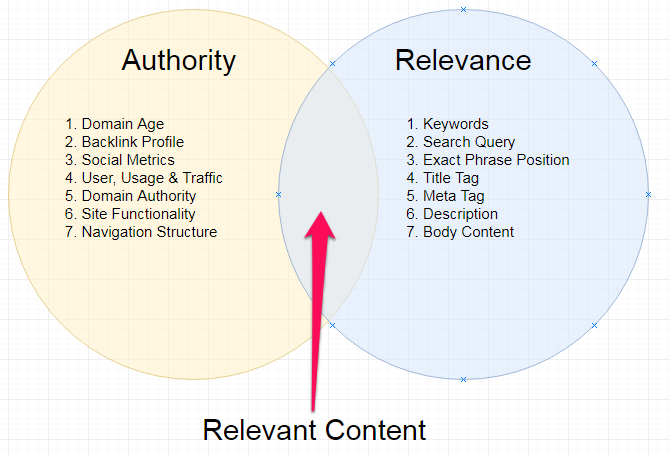
How to Ensure Content Relevance in Your Strategy
To weave relevance into your content strategy, follow these three steps:
- Identify your audience: Know their needs, interests, and problems. This knowledge forms the foundation for creating relevant content.
- Prioritization is key: Instead of trying to cater to everyone, focus on your core, engaged audience. Develop content that aligns with their queries and interests. Deep-dives into the industry’s latest trends or solutions to common challenges can be a good starting point.
- Update your content to maintain its relevance: Industries evolve, and so do audiences – staying fresh ensures you remain connected to your audience’s current needs and continue to deliver value. Regularly review and update your content to offer current, worthwhile information.
Enhancing content relevance might seem like a minor tweak, but its benefits are substantial. From boosting SEO to fostering a strong connection with your audience, the impact of highly relevant content is undeniable. So, reshape your content strategy with relevance at its core and observe its uplifting effect on your digital engagement.
Effective Content Research Techniques for High-Quality Content
- Key benefits: Gain a better understanding of your audience, and create content tailored for them. Learn how using keyword research and competitor analysis can enhance your content, and stay updated with industry trends.
Identifying Your Target Audience
Identify who your content is for before crafting it. Think about:
- Age group
- Occupation
- Interests
- Location
- Gender
This will help you create content that speaks directly to them and addresses their needs, questions, and pain points.
Offering solutions to their problems immediately positions you as a credible source of information. And, a better understanding of your audience’s preferences also allows you to pick appropriate content formats for your messages.
Use Keyword Research Tools
Keyword research tools are priceless in guiding your content creation process. They provide insights into what your target audience is searching for online and the language they’re using.
With these tools, you can pinpoint trending topics, discover long-tail keywords, and uncover relevant phrases to include in your material. By incorporating these keywords strategically into your content, you’re not only enhancing visibility but also ensuring your content is relevant and valuable to your audience.
Here are some specific keyword research tools often recommended for content creators:
- google keyword planner: Integrated with Google Ads, this tool is great for finding keywords related to your business and estimating search volumes and competition levels.
- SEMrush: Offers comprehensive keyword research, competitor analysis, and Google SERP position tracking. It’s particularly useful for understanding how your competitors are performing in search rankings.
- Ahrefs: Provides detailed keyword reports, a content explorer, and competitive analysis features. Ahrefs is well-regarded for its backlink analysis capabilities.
- Ubersuggest: A free tool by Neil Patel that offers keyword suggestions, search volume data, and competition levels. Great for beginners and small businesses.
- Moz Keyword Explorer: Offers keyword suggestions, SERP analysis, and keyword difficulty scores. Moz is also known for its domain authority metric.
Each tool has unique features, so choosing the right one depends on your specific needs and budget.
8 Steps to Leverage Competitor Analysis
Monitoring your competitors isn’t just about keeping up with the Joneses. It’s also a strategic way to gauge the kind of content your audience might appreciate. Note what’s working for them, what isn’t, and identify opportunities for your brand to fill in the gaps.
By analyzing successful competitor content, you can create your own unique, improved versions that add more value to your audience.
Effective competitor analysis involves a structured approach to gather and analyze information about your competitors. Here’s a strategy based on insights from Buffer and HubSpot:
- Identify Key Competitors: Start by listing your direct and indirect competitors. Direct competitors offer similar products or services, while indirect ones satisfy the same customer needs differently. Use tools like Google and industry directories to identify these competitors.
- Analyze Their Offerings and Strategies: Examine your competitors’ products, services, pricing, and marketing strategies. Assess their strengths, weaknesses, unique selling propositions, and the technology they use.
- Evaluate Their Online Presence: Look into your competitors’ websites, SEO strategies, social media activity, and content marketing efforts. Note the keywords they target, the backlinks they have acquired, and their engagement rates on social media.
- Conduct a SWOT Analysis: Compile your findings into a SWOT analysis, identifying your competitors’ strengths, weaknesses, opportunities, and threats.
- Understand Their Customer Engagement: Analyze customer reviews and feedback to understand what customers appreciate and dislike about your competitors’ offerings.
- Monitor Their Job Postings and Culture: Job postings and company culture can give you insight into a competitor’s strategic direction and values.
- Keep Track of Their Financial Health: If possible, gather information on your competitors’ revenue, funding, and financial health to gauge their market position and investment capabilities.
- Use Competitive Analysis Tools: Leverage tools such as BuiltWith, Crunchbase, and social listening platforms like Awario to gather data on your competitors’ technology stack, funding history, and online mentions.
When you follow these steps, you’ll gain a comprehensive understanding of your competitors and identify areas where you can differentiate and improve your offerings.
The goal is not just to copy what others are doing but to find opportunities where you can outperform them and better meet the needs of your target market.
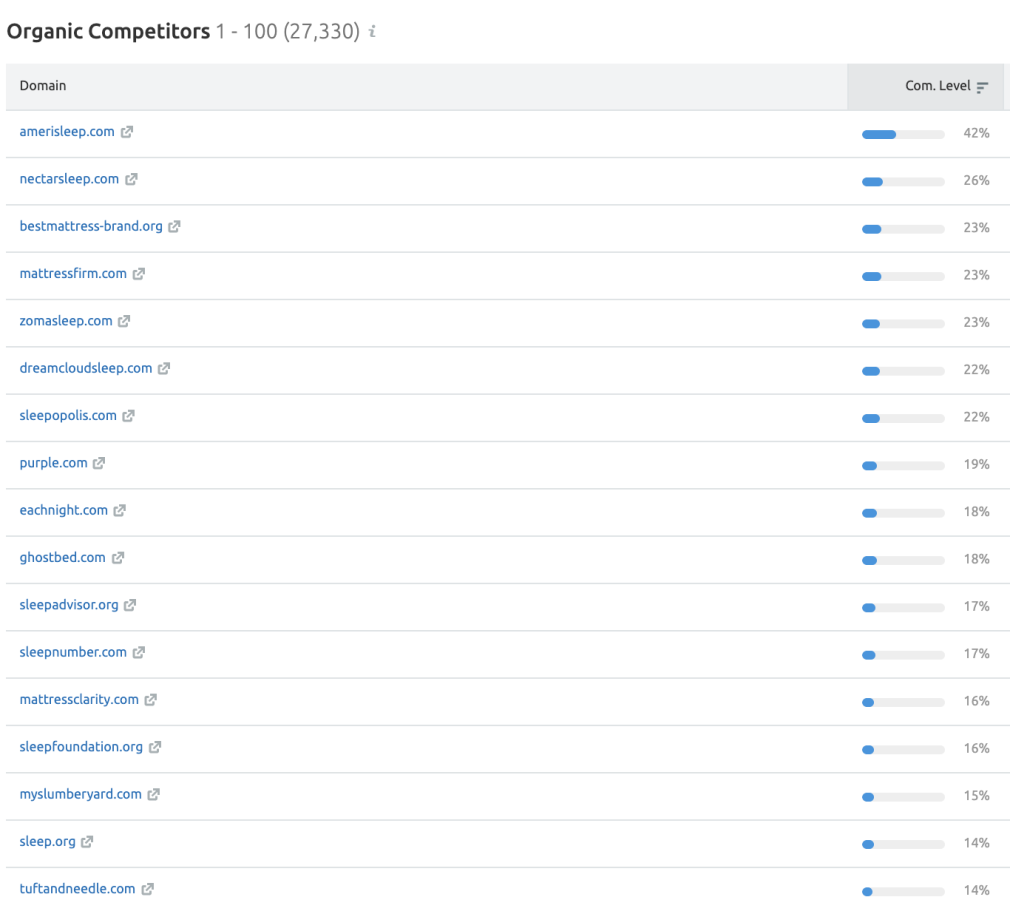
The Importance of Staying Updated with Industry Trends
In our constantly evolving world, what works today may not work tomorrow, and vice versa. Therefore, it’s crucial to stay updated with latest industry trends. This can help you:
- Anticipate changes
- Keep your content fresh
- Spot emerging opportunities in a timely manner
Whether it’s changes in algorithm updates, new social platforms, trending topics, or user behaviors, being in the know will allow you to adjust your content strategy accordingly and stay ahead of the curve.
Taking these four steps into account will assist you in developing high-quality content that your audience will find reliable, valuable and pertinent. The more you understand your audience and the landscape in which you operate, the better you can serve meaningful content that resonates.
Crafting a Value-Driven Content Strategy: A 3-Step Guide
TL;DR:
- Design content goals that resonate with your target audience
- Leverage the effectiveness of a content calendar for planning purposes
- Apply a content audit to ensure existing content aligns with your chosen goals
- Regularly measure content performance and adjust your strategy for optimal success.
1. Define Your Content Goals
Planning for success begins with defining laser-focused content goals. One in every three marketers can effectively navigate the content strategy terrain, primarily because they set specific content goals. These objectives are the foundation of a content strategy and constitute the ‘why’ behind every content piece.
According to content marketing statistics, 72% of successful marketers in North America measure the ROI of their content marketing, underlining the importance of goal-setting in evaluating success.
This emphasis on setting specific content goals is not just about increasing site traffic or brand visibility; it’s about aligning with concrete business objectives like lead conversions or customer retention rates, which ultimately contribute to the bottom line.
While aiming for more site traffic or greater brand visibility is not a bad place to start, strive for more detail. To offer real value, align goals with concrete business objectives such as increasing lead conversions or boosting customer retention rates.
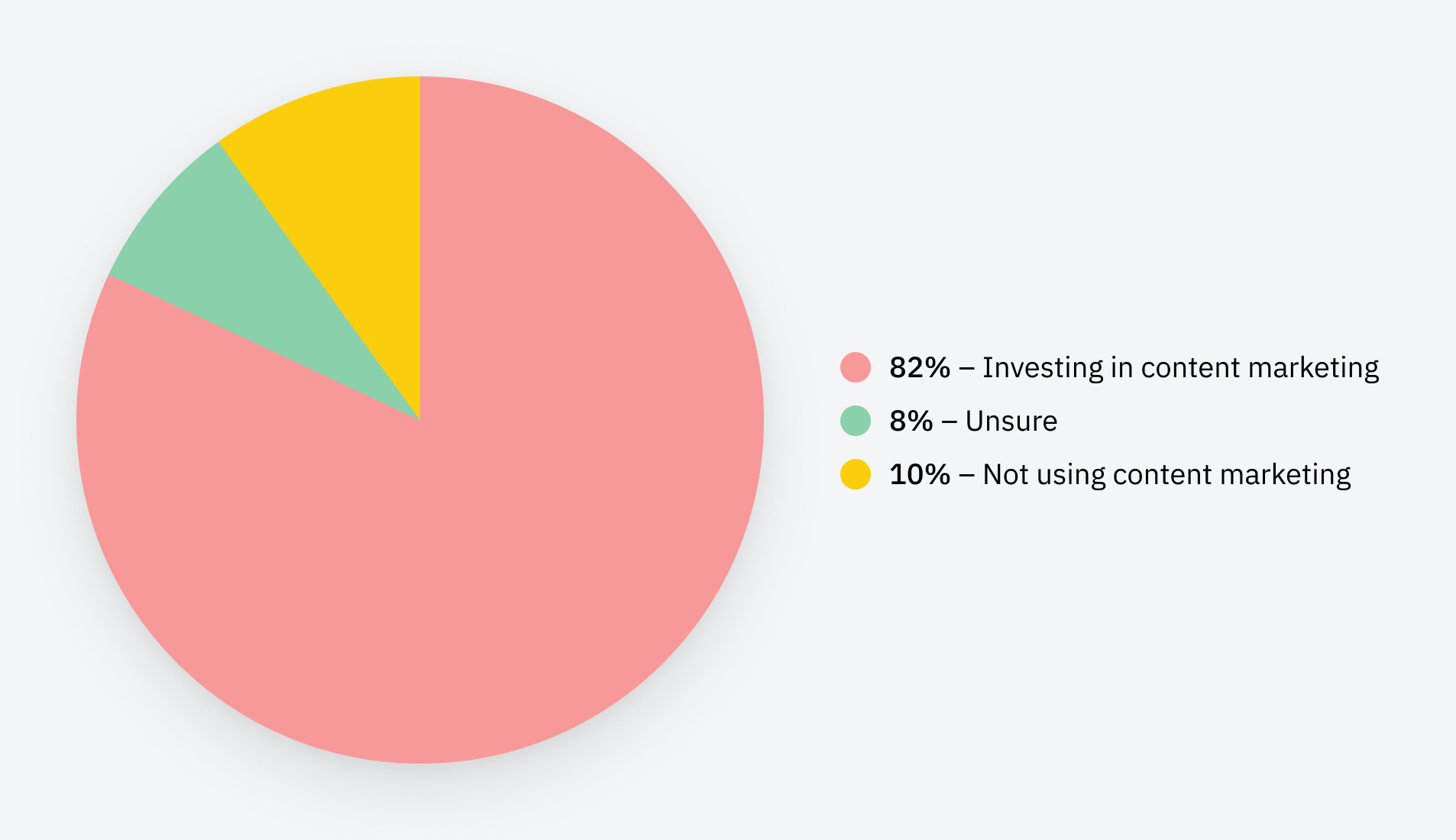
2. Create a Content Calendar
If punctuality is the soul of business, then a content calendar is a mastermind behind a thriving content strategy. It’s no coincidence that IAB reported that 73% of highly effective organizations have someone in place to oversee their content strategy.
A well-managed content calendar curbs last-minute scrambles for topic ideas or missed deadlines. It provides a broad overview of what needs to be created, who’s in charge, and the publishing schedule.
To guide the scheduling of your content, consider:
- Your content goals
- Audience insights
- Key events
The result? A well-oiled content machine working round the clock to engage and convert your audience.

3. Implement a Content Audit
Whoever said “Out with the old, in with the new” had probably never done a content audit. Implementing a content audit allows you to maximize the value of your existing content and pinpoint any room for improvement.
Start by inventorying your content pieces, then evaluate their relevance, accuracy, and effectiveness in achieving your content goals. This will help you update the value of your old content and provide valuable insights to inform your next strategy.
Why Updating Old Content is Essential
- Identify content that needs updating.
- Analyze old content’s performance.
- Research for updated keywords and SEO trends.
- Revise and update the content.
- Republish and promote updated content.
Remember, everything that glitters is not gold. Some old content may need comprehensive updates or even outright disposal, while other pieces may simply need a mild optimization. Trust the process – the ultimate goal is a cohesive, value-driven content portfolio.
For the full step-by-step guide to updating old content, our Expert’s Guide to Content Refresh’s: 10 Years of SEO Experience Shared is a must-read.
Measure Content Performance and Adjust Your Strategy
If content is king, then data is the grand wizard. The measuring phase is crucial because it offers actionable insights into what’s successful and what could use revamping. Use defined KPIs to assess the performance of your content against your content goals.
Here’s a streamlined table of common KPIs used for measuring content performance, along with their descriptions:
| KPI | Description |
|---|---|
| Website Traffic | Total number of visitors to your content or website. |
| Engagement Rate | Percentage of visitors who interact with your content through likes, shares, comments, etc. |
| Lead Generation | Number of new leads generated directly from the content. |
| Conversion Rate | Percentage of visitors who take a desired action after viewing your content. |
| Bounce Rate | Percentage of visitors who leave your site after viewing only one page. |
| SEO Rankings | Position of your content in search engine results for targeted keywords. |
| Social Shares | Number of times your content is shared on social media platforms. |
| Time on Page | Average amount of time visitors spend reading or interacting with your content. |
| Click-Through Rate (CTR) | Percentage of users who click on a link to your content from another source. |
| Return on Investment (ROI) | Financial return compared to the amount of money spent on creating and promoting the content. |
These KPIs can provide actionable insights into the performance of your content and help you assess whether your content strategy aligns with your goals. It’s important to select KPIs that align most closely with your specific content goals and objectives, and to review these metrics regularly to adjust your strategy for optimal results.
Your strategy shouldn’t be set in stone, ready to adapt based on these on-going performance assessments. Remember, in the world of content, what worked yesterday may not work next week. Stay agile and keep moving toward your content goals.
Research-Based Content Examples: Learning from the Best
Learn from real life case studies where companies have transformed their content strategy, amplified engagement, surged SEO rankings, or supercharged their conversions.
Case Study 1: Elevating Engagement Through Content Research – HubSpot
HubSpot, a leader in inbound marketing, sales, and customer service, exemplifies the power of content research in driving engagement. By using data-driven insights to understand their audience’s needs, HubSpot creates comprehensive guides, blog posts, and resources that address specific industry challenges and questions.
This approach has not only positioned HubSpot as a thought leader but also significantly increased its website traffic and user engagement. Conducting in-depth content research allowed HubSpot to understand the content forms their audience preferred.
Their annual “State of Marketing Report” is a result of extensive content research and surveys, offering valuable insights to marketers worldwide, thereby enhancing HubSpot’s brand authority and user engagement.
This approach encouraged an emphatic resonance between their brand and their audience, leading to a substantial surge in engagement. By focusing on those specific forms, they ensured a communal relevance between their brand and their audience.
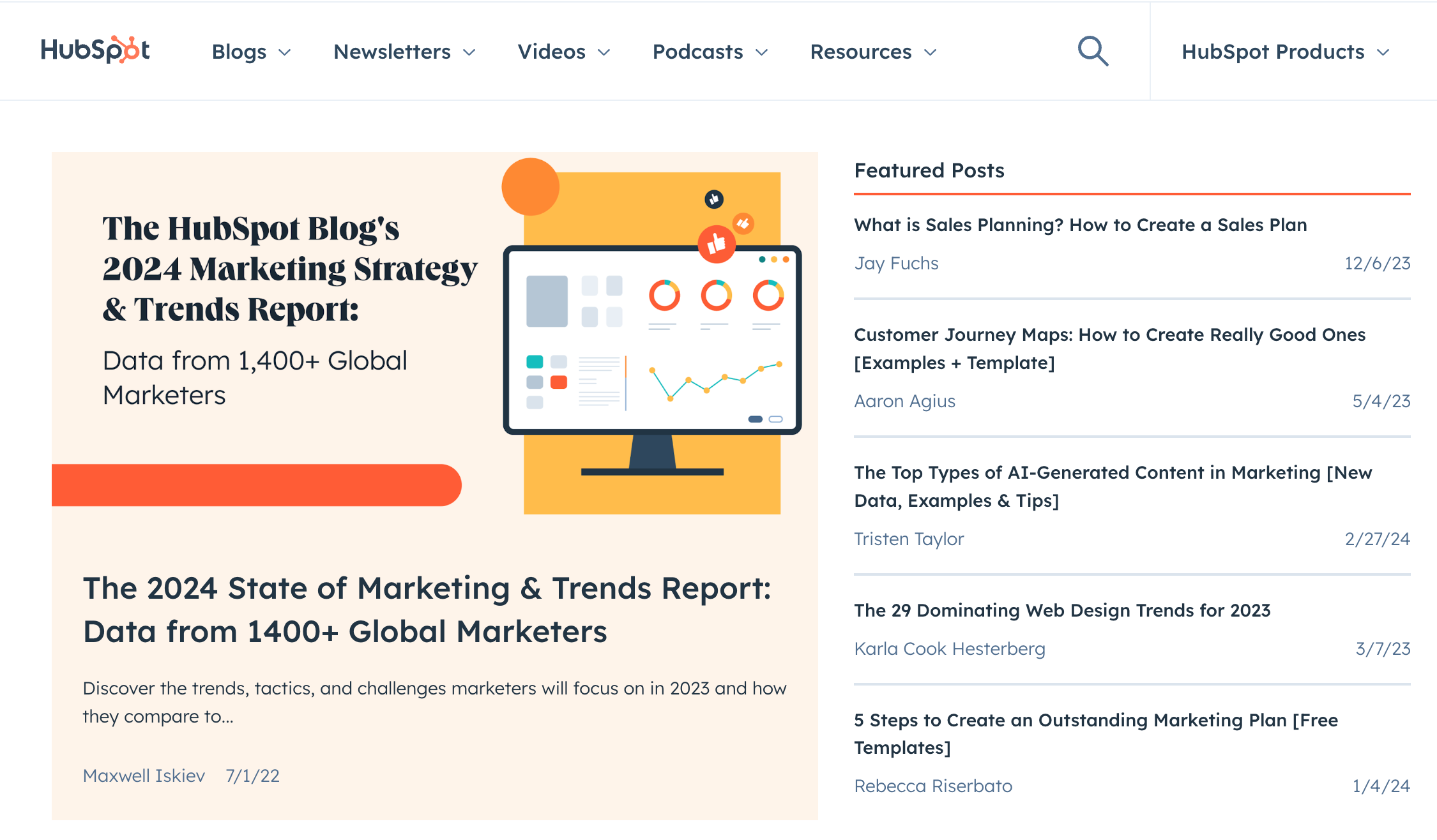
HubSpot integrated their content research with data analytics, which aided in formulating a future-proof content creation approach.
Their primary focus was on providing value-laden content that was relevant, informative, and intriguing, making it the perfect recipe for audience engagement. This case study eloquently demonstrates the importance of staying attuned to your audience’s preferences.
Case Study 2: Soaring SEO Rankings with Relevant Content – Airbnb
Airbnb’s SEO strategy showcases the successful integration of content relevance and user intent. By optimizing their listings and guidebooks with local SEO principles and focusing on user-generated content, Airbnb has improved their visibility on search engine results pages (SERPs).
Their strategy includes creating destination guides and local experiences content, directly addressing the queries and needs of their target audience. Their biggest asset? The listing images – they capture the attention of travelers and tourists.
“Airbnb made 82 Million average visits in July 2023. 2 Million bookings are made daily on the Airbnb website.”
By meaningfully embedding SEO within their content creation process, Airbnb managed to elevate their search engine ranking significantly. Structured around customer-centric keyword research, their content strategy struck a resonating sounding board with both their target audience and search engine algorithms.
As a result, Airbnb has seen a significant increase in organic search traffic, enhancing their market presence and user base globally.
Airbnb emphasized crafting distinctive, value-laden content that was picked up by search engines for its unique relevance. This case study demonstrates the potential power of marrying SEO with content research.
The SEO Success Story
Airbnb’s team, boasting a forward-thinking approach, constructed an effective local and long-tail keyword strategy. They focused on keywords that were niche to their industry, seeking to answer specific questions posed by their target audience. This resulted in their content ranking high in search engine results, enhancing visibility and reach.
This video by Jaume Ros dives deeper into Airbnb’s SEO strategy and notes some additional like listing page templates (and resulting URL templated structures), internal linking, the use of bread crumbs and more.
Case Study 3: Enhancing Conversions with Value-Driven Content – Adobe
Adobe’s transformation of its blog into the Adobe Experience Cloud Blog is a testament to the power of value-driven content in increasing conversions. By focusing on content that addresses the needs and challenges of digital marketers and IT professionals, Adobe has successfully driven higher engagement and conversions.
Their strategy includes detailed tutorials, thought leadership pieces, and customer success stories, all aimed at providing actionable insights for their audience. This content-driven approach has not only improved Adobe’s product adoption rates but also established a loyal community of users.
Adobe offers an invaluable case in point to learn from when it comes to executing a value-driven content strategy geared towards increasing conversions. By extensively researching their:
- Audience
- Competition
- Industry landscape
They were able to craft and deliver content that was impactful and compelling, leading to increased conversions.
With an acute understanding of the customer journey, Adobe created content that directly answered the questions of its prospective customers, showcasing their products as the solution.
Their content was not just about their products, it was a direct answer to their audience’s needs. This heightened alignment between their brand and consumer requirements caused a noticeable spike in conversions.

8 Proven Methods for Conducting Content Research that Delivers Relevance and Value
Diving into the art of content research, we’ve gathered eight unique perspectives from CEOs to marketing managers, revealing their most effective strategies. From leveraging experiential learning insights to gathering feedback with customer surveys, discover how these professionals ensure their content resonates with relevance and value.
- Leverage Experiential Learning Insights
- Identify and Utilize Industry Experts
- Adopt a User-First Research Strategy
- Understand and Serve Your Audience
- Use Trends and Forums for Relevance
- Conduct Audience Interviews
- Apply the “Skyscraper Technique”
- Gather Feedback with Customer Surveys
Leverage Experiential Learning Insights
As a CEO, my core content research strategy is “experiential learning.” As I navigate leading a tech company, I make it a point to learn from every encounter, every disruption, every innovation.
This hands-on approach keeps me at the forefront of real-time knowledge and trends. By sharing my experiences, the content becomes naturally insightful, relevant, and valuable. This method allows us to share a narrative that no third-party research can replicate, because it’s our story, our lessons learned.
Abid Salahi, Co-Founder and CEO, FinlyWealth
Identify and Utilize Industry Experts
The trick lies in identifying the true experts and enthusiasts in your field of interest and using their knowledge and content, spread throughout the web, as your go-to resource for crafting the perfect first draft. You must understand where these people hang out, who they talk to, what they like to talk about, and what their primary interests and problems they are trying to solve are.
Then, you can get a much broader picture of your topic of interest and how it relates to other subtopics and niches in general. Sometimes, it is as easy as Googling the topic and identifying real experts.
On other occasions, you must search YouTube, forums, and social media channels such as LinkedIn, or even read a ton of case studies and familiarize yourself with the literature about your topic. It’s never easy, but the depth of your content is directly proportional to the effort you put in and the decision on which way to look at it and what people to trust as experts.
Jason Vaught, President, HSC – Houston SEO Company
Adopt a User-First Research Strategy
I take a “user-first” approach to research by asking what questions the audience might have about the topic, where they’re looking for answers, and how well existing content is meeting those needs. I explore trending searches for related topics, examine Q&As and forums where people are asking for advice or help, and read what’s been said about previous versions of the content we’re working on. That understanding helps identify what’s missing, and what experiences deserve to be written about.
One of my favorites is keyword analysis, using tools to identify the search behaviors of your audience’s community, and what questions they’re asking. In one case, this approach highlighted that sustainable living was trending: our audience was very interested in this topic area. This helped us to devise an editorial series that not only received very good engagement but also established our brand as a thought leader in this area.
Zoe Miller, Strategic Business Leader and Market Analyst, Tea Time Facts
Understand and Serve Your Audience
You have to understand your audience. There are several ways to learn more about your audience, such as surveys, social media, and market-intelligence apps. Don’t just rely on finding low-volume keywords to generate traffic; provide the information that your customers want.
Eric Novinson, Founder, This Is Accounting Automation
Use Trends and Forums for Relevance
To make sure my content is relevant and valuable, I always start with understanding my audience. I use tools like Google Trends to see what topics are currently popular and relevant to my target audience.
This helps me focus on creating content that people are actually searching for. Another tip is to check out online forums and social media groups related to my niche to see what questions people are asking. This way, I can tailor my content to answer those specific questions, making it extremely useful for my readers.
John Frigo, E-Commerce Manager, Best Price Nutrition
Conduct Audience Interviews
I prioritize a multi-pronged approach to content research, ensuring both relevance and value for my audience. One specific method I recommend is conducting audience interviews.
Here’s why:
1. Direct Insights: Interviews and surveys offer insights into your target audience’s needs, pain points, and interests, revealing specific content topics and language for content tailoring.
2. Identifying Knowledge Gaps: Audience feedback often unveils hidden knowledge gaps you might not have anticipated. It helps you create content to address specific understanding and bridges those gaps, offering valuable information they won’t find elsewhere.
3. Prioritizing Content Strategy: By analyzing responses, you can prioritize content themes and formats that resonate with your audience. It ensures you allocate resources efficiently and focus on content that truly engages and benefits your target demographic.
Fahad Khan, Digital Marketing Manager, Ubuy India
Apply the Skyscraper Technique
When approaching content research, my primary focus is to understand the current questions, challenges, and interests of my target audience. This involves staying active in running communities, both online and offline, and using social listening tools to monitor conversations and trends related to running and coaching.
One specific method I use and recommend is the “Skyscraper Technique,” which involves identifying top-performing content within your niche and then creating something even better. By analyzing what makes that content successful-be it depth, clarity, or engagement-I aim to produce material that adds more value, whether through more comprehensive information, updated statistics, or personal insights.
Additionally, I regularly consult scientific journals, reputable fitness websites, and collaborate with other experts to ensure that the information I provide is not only relevant but also backed by the latest research and best practices in the field. This commitment to evidence-based content helps establish trust and authority with my audience.
Joshua Bartlett, Running Coach, Your Next Run
Gather Feedback with Customer Surveys
At Startup House, we believe in staying ahead of the curve by constantly researching industry trends and customer needs. One specific method we use is conducting customer surveys to gather feedback on what content they find most valuable.
By listening to our audience, we can tailor our content to meet their specific needs and provide relevant and valuable information. This helps us stay relevant in the market and builds trust and loyalty with our customers. So, my tip for you is to always listen to your audience and let their feedback guide your content strategy.
Alex Stasiak, CEO and Founder, Startup House
Ensuring Content Value: Tips and Best Practices
- Create unique content that stands out
- Harness data to boost content value
- Use visuals to increase content connection
- Update content regularly to maintain freshness
The Importance of Originality and Uniqueness in Content
In the bustling world of content creation, originality triumphs. Not merely because it’s ethically right, but because duplicating content causes significant SEO penalties, potentially crippling your online visibility.
Ideally, manufacturing 100% original articles should be your goal. That’s why Penfriend exists. Each piece becomes a unique digital asset, a beacon shining across the dark expanse of the crowded internet, drawing in readers.
As professionals, stressing on originality helps set ourselves apart. We fight against the sweeping tide of repetition and forge our own paths, creating value with each keystroke. This, in turn, cements our industry authority, enhancing credibility amongst our target audiences.
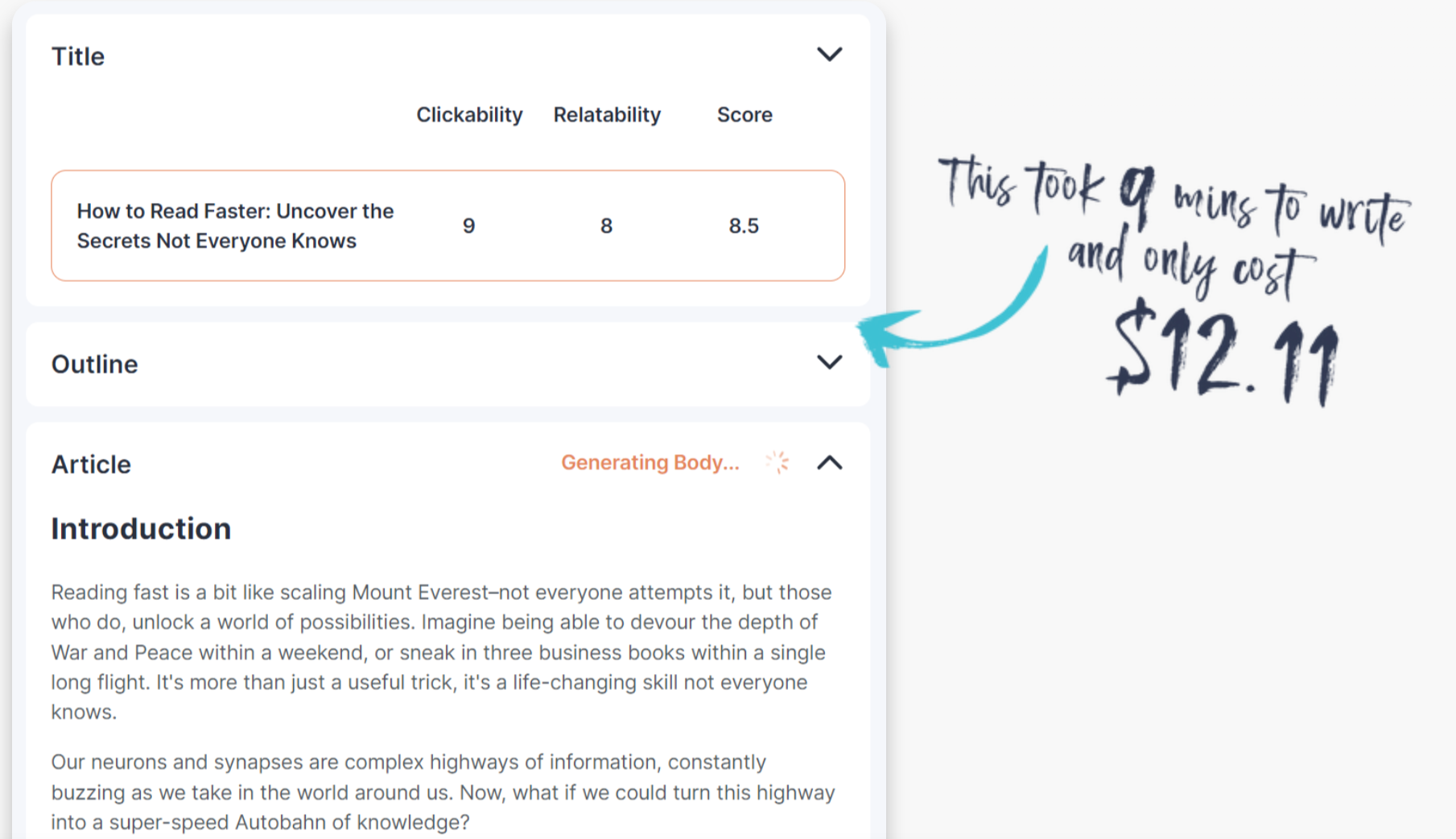
Using Data and Statistics to Add Value
“1 in 4 people are looking to quit their job.” Pack statements like these into content to instantly pump up the value. Data-driven content, sprinkled with relevant statistics provides solidity, grounding and enriching your points with unquestionable proof.
Always remember though, correlation does not imply causation. Use statistics ethically, responsibly, and intelligently. Misused, they can distort reality and mislead readers, damaging your brand’s integrity.
Remember to cite your sources, linking to them when appropriate. Readers won’t trust your content without knowing where your facts came from!
The Role of Visual Content in Enhancing Value
Half the human brain is directly or indirectly devoted to processing visual information. So, show, don’t just tell! To aid understanding and increase reader engagement, include:
- Well-designed infographics
- Charts
- Relevant images
- Tables
- Graphs
Visuals are not mere aesthetic ornaments; they serve a concrete purpose. They can condense complex data into easy peezy lemon squeezy graphics that snatch the reader’s attention, get your point across and stay remembered.
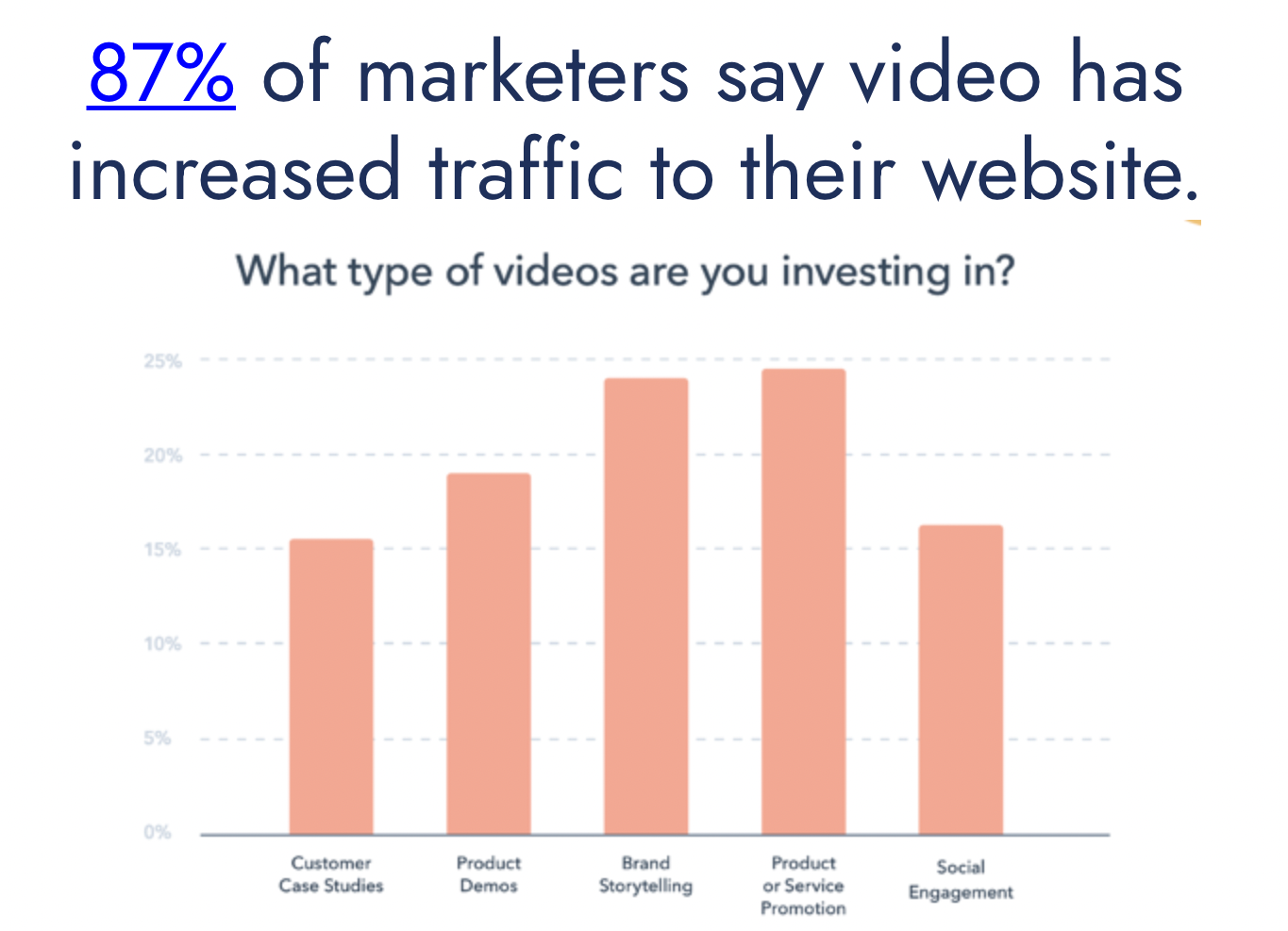
Regularly Updating Content to Maintain Its Value
Content isn’t a ‘set it and forget it’ task. Updating content over time is a crucial practice to keep its relevance and value. Refreshing old content doesn’t just help with search engine rankings, it also boosts value in the eyes of your audience.
Think about it: Are you likely to share or cite a blog post from 2008 or 2020? There’s no denying fresher content portrays more value. Therefore, dedicate time to review and update your old content. Before you go: “UH OH”.
A winning strategy? You bet!

Putting Your Content Research into Fighting Shape
Remember, content research is not just about gathering data; it’s about piecing together relevant, high-value information that will make your content stand out. Harness quality over quantity, approach analysis with focused intention, and remember the power of targeted keyword usage.
This strategy is your golden ticket to create content that resonates with your audience and overpowers the competition in the SEO boxing ring. Your game plan now? Dig into that research, carve out your niche-specific info, and build out your content with authoritative energy.
How are you gearing up to transform your content research routine?
Now, go ahead. Step into the ring. Unleash your knockout content on the world!
Content Research for Relevance and Value FAQ
Q1: What is content relevance, and why is it important?
Content relevance refers to the alignment of your content with the interests, needs, and problems of your target audience. It is crucial because it determines the effectiveness of your content in engaging users, addressing their questions, and meeting their expectations, which, in turn, boosts engagement, loyalty, and SEO rankings.
Q2: How do I conduct effective content research?
Effective content research involves identifying your target audience, understanding their preferences, using keyword research tools to discover what they are searching for online, analyzing your competitors to identify gaps and opportunities, and staying updated with industry trends to keep your content relevant and timely.
Q3: What is a value-driven content strategy?
A value-driven content strategy focuses on providing real, measurable value to your audience through your content. This means creating content that solves problems, answers questions, and provides insights that are directly relevant and beneficial to your audience, ultimately leading to higher engagement and conversions.
Q4: How can I measure the performance of my content?
You can measure the performance of your content by setting and monitoring specific key performance indicators (KPIs), such as website traffic, engagement rates (likes, shares, comments), conversion rates, time spent on page, and bounce rates. Regular analysis of these metrics will help you understand what works and what doesn’t, allowing you to refine and optimize your content strategy.
Q5: Why is it important to regularly update content?
Regularly updating content is important to ensure that it remains accurate, relevant, and valuable to your audience. This not only helps maintain your SEO rankings but also reinforces your credibility and authority in your industry, encouraging repeat visits and sustained engagement from your audience.
Q6: What are some recommended tools for content research?
Some recommended tools for content research include Google Analytics for understanding your audience’s behavior, SEMrush or Ahrefs for keyword and competitor analysis, BuzzSumo for identifying popular content and trends, and Google Trends for monitoring industry-specific trends and interests.
Glossary of Key Terms
- Content Relevance: The alignment of content with audience interests and needs.
- Content Research: The process of gathering information to guide content creation.
- Value-Driven Content Strategy: A content strategy focused on providing value to the audience.
- SEO: Search Engine Optimization, the practice of increasing website visibility in search engines.
- Keyword Research: The process of identifying popular words and phrases people use in search engines.
Additional Resources
- Recommended Tools for Content Research: Explore tools like Google Analytics, SEMrush, and BuzzSumo for insights into audience behavior and content performance.
- Blogs and Websites: Follow leading content marketing blogs and websites for the latest trends and best practices.
- Books and Courses: Enhance your knowledge with books and courses on content marketing and strategy.

